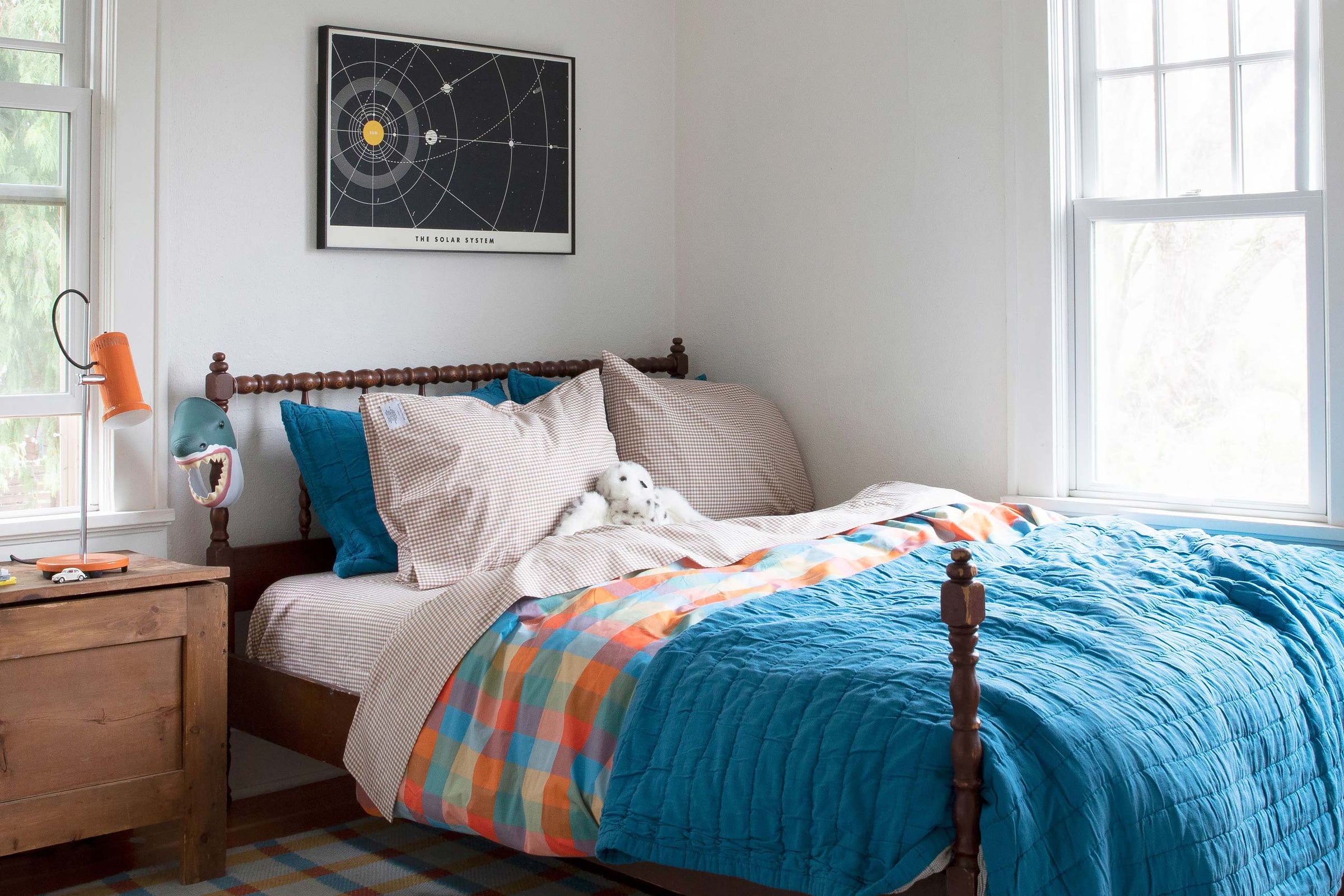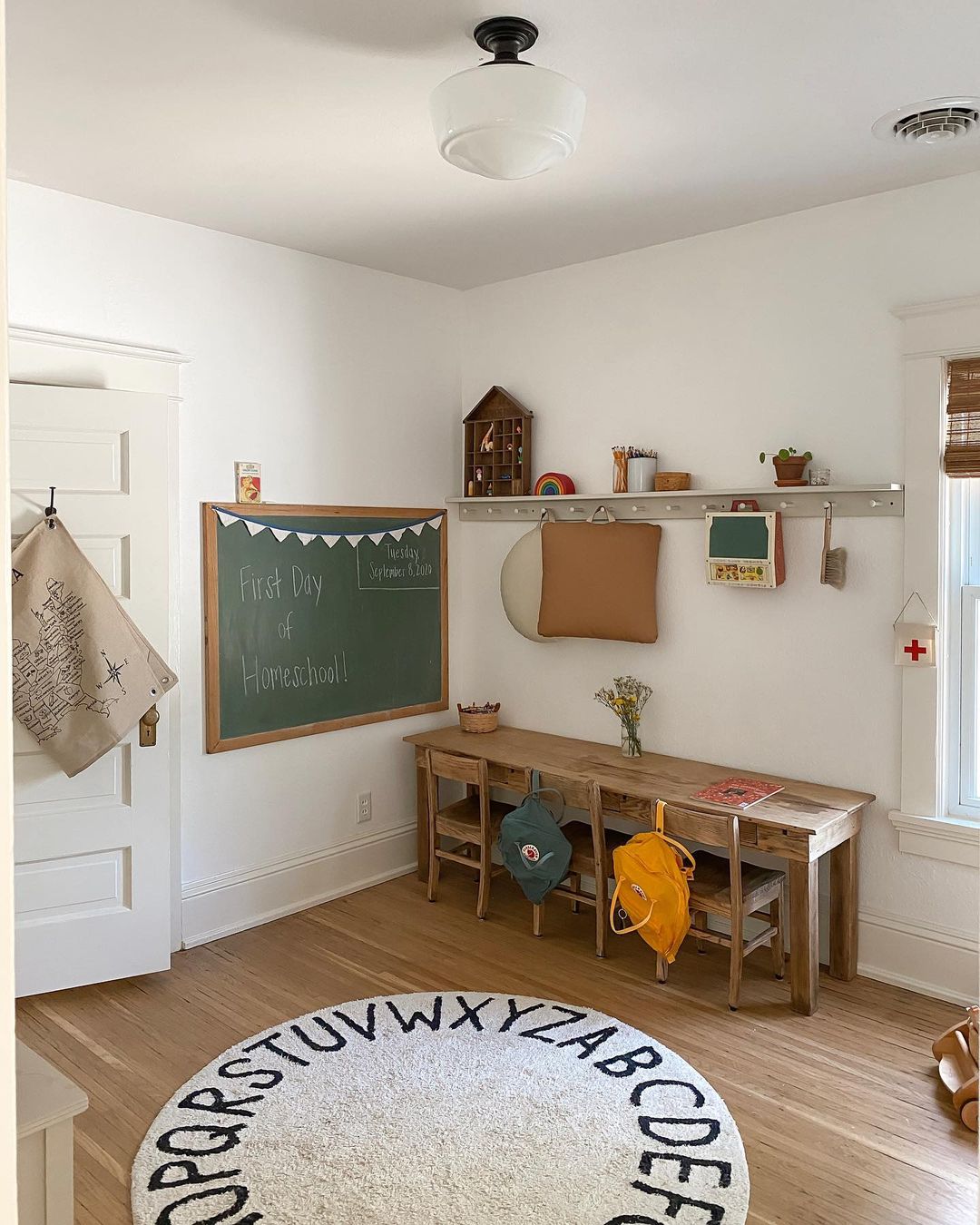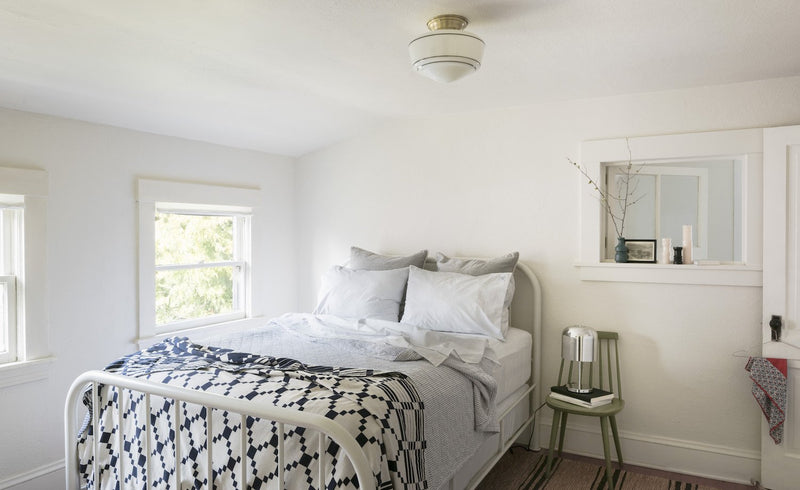Our Top 5 Kid's Room Styling Tips

In many ways, our first room is our first home - it grows as we grow and goes beyond being a place for play and sleep. Thinking back to our own childhood dwellings, we remember it as a quiet retreat, a space to dream, explore our interests, and host our first guests (often in the form of a glorious slumber party).
And while this year has redefined the meaning of home for many, there are two things we are sure will always remain. One, a well-designed space can be enjoyed by everyone, no matter the age. Two, preparing a beautiful environment for our little ones to thrive in is a joy and privilege. As an ode to the wonders of childhood, we thought we'd share a few tips for creating a thoughtfully arranged space with our littlest and most magical members in mind.

1. Select a Palette to Play With
One thing we’ve found when styling our own spaces is that it can be daunting to figure out where to begin, which is why one of the best tips we can offer is to start by selecting a palette.
 Via @ohchavela
Via @ohchavela
Sticking to a color palette often helps provide some much-needed focus and direction for projects as personal as designing your kid's room. If you're not sure what colors you're drawn to, look around you. Often the art we select, furniture we surround ourselves with, and clothing we choose (for both ourselves and our children – if they’re not picking out their clothes yet!) reveal our interests.


Via @burtsbrisplease, @studiofauve
2. See the Space Differently
Kids often do not see things the way adults do, which is why it's important to view the room from a child’s perspective. The best way we’ve found to achieve this is to get on their level, literally. What does the room look like through their eyes? Is the art low enough for them to enjoy? Are the books where they can reach? Being mindful of your child’s unique needs and interests is often the best way to design a room with care. Better yet, if your kids are able to communicate their interests, include them in the process!
 Via @lindseybadenhop
Via @lindseybadenhop
3. Organize the Room by Function
Often, knowing what to expect offers a sense of calm and stability. The same is true for the way an interior is arranged. Sectioning the room based on function is a simple way to add routine and consistency into daily life. It also helps organize belongings and keep things tidy. Here are a few functions we like to start with:
-
Toys & activity center – Open shelving or storage system with a few rotating toys can help minimize mess.
-
Arts & crafts table – A small table with chairs and art supplies stored nearby. If space allows, leave room for a “creative wall” to hang up daily creations with Washi tape.
-
Reading nook – A place to store books and read them, ideally near a window with lots of natural light.
-
Dressing area – A chest of drawers, wardrobe, or closet to store clothes. If space allows, add a self-care station with a wall mirror, lotion, brush, tissues, and a small waste bin.
-
Sleeping space – a cozy bed that can double up as a private space if sharing a room with siblings.
 Via @em_henderson
Via @em_henderson

4. Make Room for Calm
Bedrooms are often the most sacred spaces within the home, which is why creating a calm and cozy corner is one of our top priorities when setting up a kid’s room (or any room for that matter). While there are many ways to up the cozy factor, we've found that adding vintage and heirloom pieces are an easy and economical way to add warmth and personality.


Turns out, there are also psychological benefits to creating a calm environment and visiting it regularly. Author and family therapist Jane Nelsen shares that setting up a calm space for children within the room provides a safe place to unleash emotions, spend time alone, and wind down after a busy day. We've also found, this can be particularly helpful as kid's grow to need more independence.
 Via @jtwdesignllc
Via @jtwdesignllc
 Via @livviejane
Via @livviejane
5. Be Mindful of Shared Space
When designing a room for multiple children, there are some additional things to consider. We've found that the key is to make sure each child has a place where they can be alone. It can be as simple as a permanent pillow fort or a canopy over the bed (that can be closed for privacy).


Via @maxwhumphrey
Being mindful of differing interests is also important. Provide an opportunity for each child to personalize and take ownership of their area. Here are a few ideas to get started:
-
Install a shelf over the bed that can be personalized with trinkets, photos, and soft toys.
-
Split up storage space based on age and activity using the higher shelf for older children and lower for younger members.
-
Hang a floating bookshelf at varying heights for different children and have one of the older children help rotate books out regularly.
When all is said and done, designing a home is a deeply personal exercise. If anything, we hope this guide helps inspire you to get creative and explore what works best for your family.
 Via @em_henderson
Via @em_henderson
 Via @chelseamohrman
Via @chelseamohrman
 Via @em_henderson
Via @em_henderson


 Via
Via 

 Via
Via 